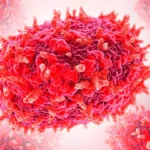In the realm of infectious diseases, Parvovirus B19 stands out as a small yet significant player that can have varying effects on the human body. This insidious virus, also known simply as Parvovirus or Parvo Virus, has been known to cause a range of illnesses, most notably Fifth disease (erythema infectiosum).
Exploring the Nature of Parvovirus B19
Parvovirus B19 belongs to the Parvoviridae family and is characterized by its single-stranded DNA structure. This tiny virus primarily affects humans, with children being particularly susceptible to its influence. The transmission of Parvovirus B19 typically occurs through respiratory secretions, such as saliva or sputum, making it easily transmissible in crowded environments like schools or daycare centers.
Symptoms and Effects of Parvovirus B19 Infection
Individuals infected with Parvovirus B19 may experience a range of symptoms, including fever, rash (often referred to as a “slapped cheek” rash in Fifth disease), and joint pain. While most cases of Parvovirus B19 infection are mild and resolve on their own, certain populations, such as pregnant women or individuals with compromised immune systems, may be at higher risk for complications.
In some instances, Parvovirus B19 infection can lead to more severe conditions, such as anemia, especially in individuals with preexisting blood disorders. The virus has also been associated with arthritis-like symptoms in some cases, causing discomfort and joint pain.
Diagnosis and Treatment Approaches
Diagnosing Parvovirus B19 infection often involves a combination of clinical evaluation and laboratory tests, including serological tests to detect antibodies specific to the virus. While there is no specific antiviral treatment for Parvovirus B19, management typically focuses on symptom relief and supportive care.

Conclusion: A Tiny Virus with Far-Reaching Effects
In conclusion, virus may be small in size, but its impact on human health can be significant, particularly in vulnerable populations. By understanding the nature of this virus, its modes of transmission, symptoms, and potential complications, we can better prepare and respond to cases of Parvovirus B19 infection.
Whether encountering Fifth disease in a school setting or addressing complications in at-risk individuals, awareness and knowledge about Parvovirus B19 are crucial in effectively managing and mitigating its effects on health and well-being.
The mysterious yet intriguing world of Parvovirus B19 continues to fascinate researchers and healthcare professionals, shedding light on the intricate interplay between viruses and the human body.
for more on news.



